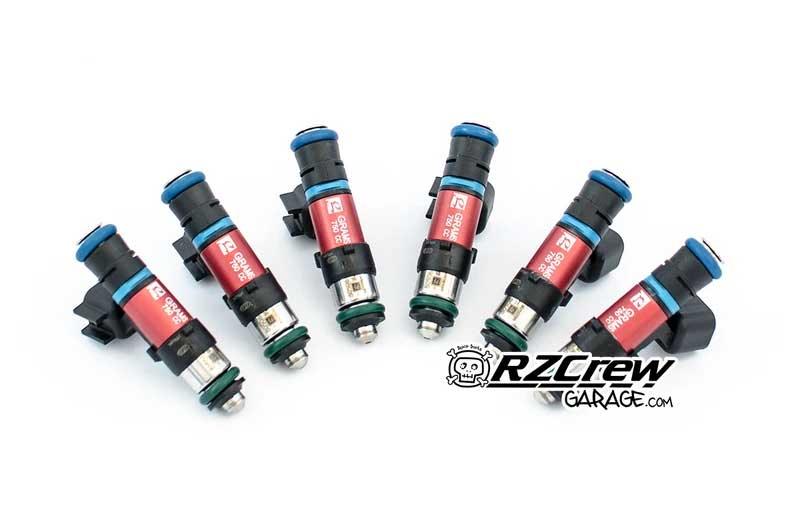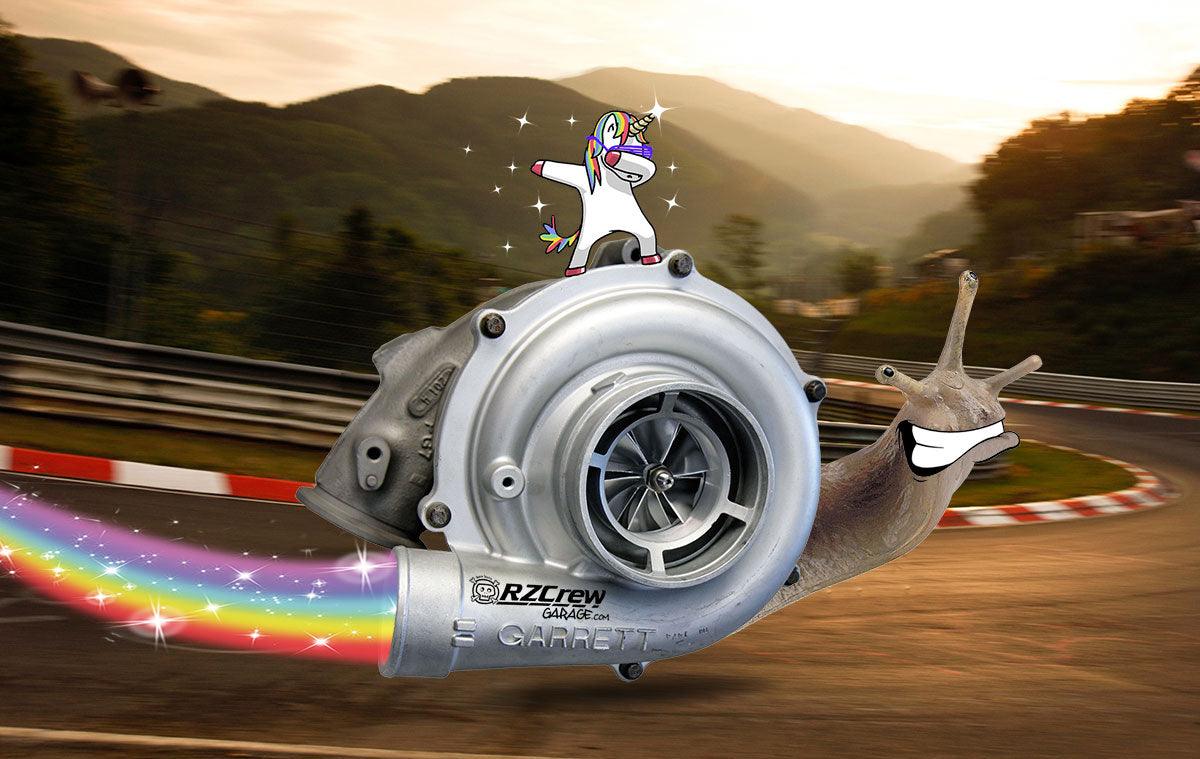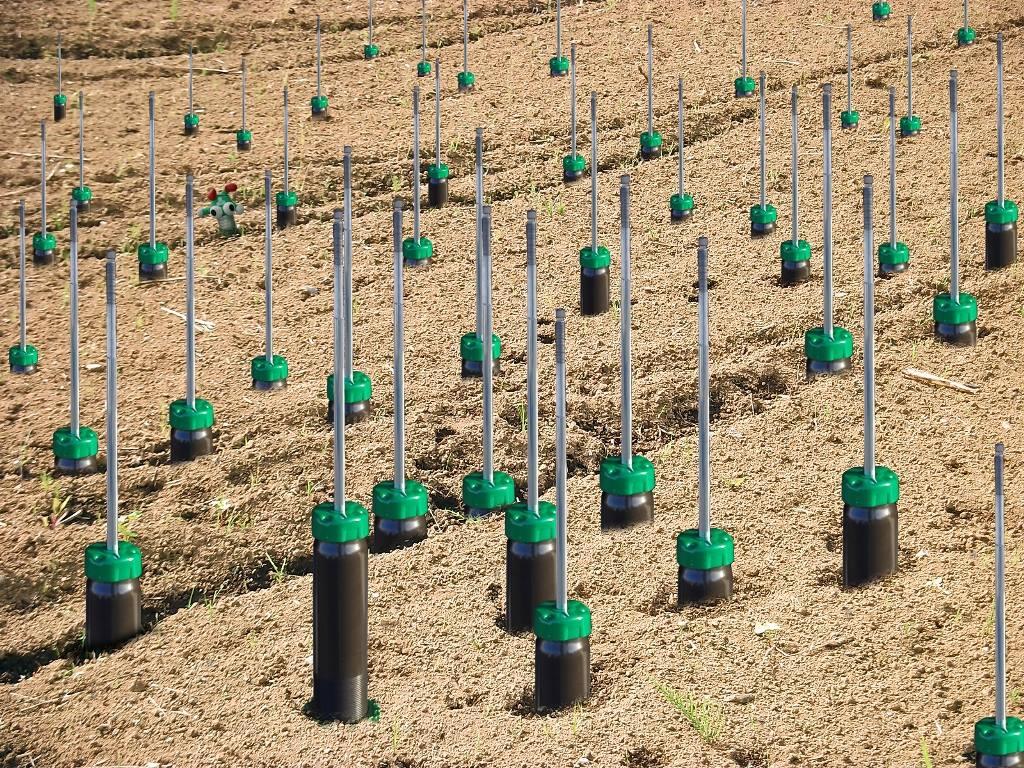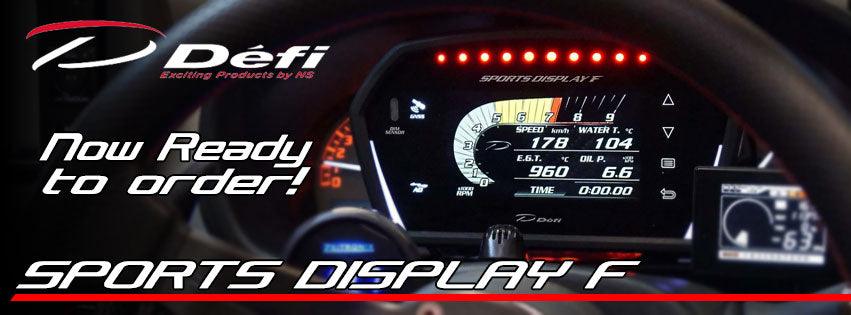News

How to choose the right injectors for your engine
When do I need to change/upgrade my Injectors?
If you're hunting for injectors and are wondering:
- How do I know when to change injectors?
- What injector size is the best for my build?
- How to I check the duty cycle?
- How do I check if I am running rich or lean?
- Is there a difference between top feed and side feed injector flow?
Then this section is for you!
Getting the right air/fuel mixture in your engine is paramount to making more power and keeping your engine running well. Quite a few modifications will affect the air delivery in the combustion chamber, and thus the Air/Fuel Ratio (AFR). If your engine runs too rich, you will have increased fuel consumption and might have flooding issues, and if it runs too lean, you can burn out the pistons and destroy your engine. As a main rule of thumb, injectors should not be running over 90% of their duty cycle. Above this threshold, it is recommended to get higher flow ones to make sure your engine does not run lean.
This guide will help you identify if you need to change to higher-flow injectors, and what flow-rate you need for your power goals.
What modifications require a change to bigger injectors?
These are some of the main modifications that will require you to check and/or change your injectors:
- Increase engine compression ratio
- Upgrade of camshafts with 1mm lift or more
- Installation of a forced induction system (turbo, supercharger) on a NA engine
- Upgrade of turbocharger or supercharger pulleys.
- Installation of individual throttle bodies
- Port and polish of engine head
- Installation of bigger valves.
- Installation of a higher flow fuel pump
Variable Valve Timing engines usually require more fuel to be injected, so checking the duty cycle after a mod is a wise precaution to be taken.
How to check if i'm running lean?
The easiest and simplest way to know if your engine is running too lean is to have a look at your spark plugs. You can refer to the guide below to know how your engine is doing based on the state of your spark plugs.
How do I check the duty cycle of my injectors?
The duty cycle is not something easy to determine without the help of a tuner, but it is imperative to upgrade them if their duty cycle at Wide Open Throttle (WOT) exceeds 90% capacity.
Should I just get the biggest injectors I can then?
Biggest is not always better when it comes to injectors, and if the ones you choose are too big, you can have issues such as engine flooding, or fouled spark plugs, and damage your engine.
So how do I find the right injector size for my needs?
This depends on 5 factors:
- Horsepower target
- Engine type
- Injector position
- Aspiration (NA / turbo / supercharged)
- Type of fuel
- Please take note that for side-feed injectors, you need to increase the injector capacity by 15% compared to top feed
Injector Selection Tables
With all these factors established, you can now choose the right injectors for your needs, based on the tables below.
Points to note are:
- Horsepower is at the engine (count a drivetrain loss of 30% if you calculate based on wheel horsepower)
- Injector duty cycle is 80%
- Fuel pressure is 3bar (43.5psi)
Petrol, Turbocharged or Supercharged
| 4 Cylinders | 6 Cylinders | 8 Cylinders | |
|---|---|---|---|
| HP | cc/min | cc/min | cc/min |
| 200 |
|
|
|
| 300 |
|
|
|
| 400 |
|
|
|
| 500 |
|
|
|
| 600 |
|
|
|
| 700 |
|
|
|
| 800 |
|
|
|
| 900 |
|
|
|
| 1000 |
|
|
|
| 1100 |
|
|
|
| 1200 |
|
|
|
Petrol, NA
| 4 Cylinders | 6 Cylinders | 8 Cylinders | |
|---|---|---|---|
| HP | cc/min | cc/min | cc/min |
| 200 |
|
|
|
| 300 |
|
|
|
| 400 |
|
|
|
| 500 |
|
|
|
| 600 |
|
|
|
| 700 |
|
|
|
| 800 |
|
|
|
| 900 |
|
|
|
| 1000 |
|
|
|
| 1100 |
|
|
|
| 1200 |
|
|
|
E85 Turbocharged or Supercharged
| 4 Cylinders | 6 Cylinders | 8 Cylinders | |
|---|---|---|---|
| HP | cc/min | cc/min | cc/min |
| 200 |
|
|
|
| 300 |
|
|
|
| 400 |
|
|
|
| 500 |
|
|
|
| 600 |
|
|
|
| 700 |
|
|
|
| 800 |
|
|
|
| 900 |
|
|
|
| 1000 |
|
|
|
| 1100 |
|
|
|
| 1200 |
|
|
|
E85 NA
| 4 Cylinders | 6 Cylinders | 8 Cylinders | |
|---|---|---|---|
| HP | cc/min | cc/min | cc/min |
| 200 |
|
|
|
| 300 |
|
|
|
| 400 |
|
|
|
| 500 |
|
|
|
| 600 |
|
|
|
| 700 |
|
|
|
| 800 |
|
|
|
| 900 |
|
|
|
| 1000 |
|
|
|
| 1100 |
|
|
|
| 1200 |
|
|
|
Find your Injector Kits here!
- Benjamin Attard
- Tags: grams performance how to choose your injectors injector duty cycle Injectors what injector size

How to Choose Your Bucket Seat: The RZCrew's Seat Size Charts
Bucket seats are a dime a dozen, and it's always a big question to find out which size fits you best.
A good bucket seat makes a big difference on track as you don't have to fight the G-Forces to stay in your seat, but they also enhance the "butt feel", and let you have more information as to what is happening with your car.

Whether they come from Japan, US, or any other country, the sizes vary due to the average body type of the region in which they are made. For example, and M size from the US will be bigger than an M size from Japan, and that always gives headaches when looking for the right fit.
Thus we have compiled a list of seats and sizes to help you find out which fit is the best for you.
It is still an average, but it will cut out a lot of doubts when you are looking for the seat of your dreams:

You can view the full list of seats we have available on RZCrewGarage.com here:
https://rzcrewgarage.com/collections/seats
Just remember to use the sort filter to find the right brand/size/colour and material you prefer!
- Benjamin Attard
- Tags: Bride Bucket Seat Chargespeed Edirb Size Sparco Sports Seat

How to Choose Your Turbo: The Rzcrew turbo map tool!
If you are looking at turbos and wondering:
- What turbos are available for my needs?
- How to find the best turbo for my engine?
- How to avoid turbo surge or turbo lag?
Then this article is for you!

There are three well know facts about turbos:
- They look like snails
- They use magic or unicorn power (depending on your religion)
- Most importantly, they make POWER
But aside from the mystical properties of turbos, there is actually some science and physics behind them.
Whether you are upgrading your turbo or building a powerhouse from an NA mill, choosing the right weapon for your use is critical, and this is why the RZCrew Academy has come up with a magic excel file to help you find the best turbocharger for your needs.
How turbos work in 2 lines:
Turbos use exhaust gases to spin a turbine. This turbine compresses air coming in the engine, and this dense air, once mixed with fuel in the combustion chamber, creates a much stronger explosion, and more power.

There are armies of turbos out there, and before you slap one on your engine, it is important to know which one will be the best one for your needs. This depends on a lot of factors such as the type of engine, displacement, max RPM, whether you are running an intercooler or not, and others such as atmospheric pressure and intake air temp.
These factors, once computed, result in two main parameters: Corrected Airflow and Pressure Ratio. Comparing those two values against a turbo map allows you to find the right turbo size for your needs and avoid turbo surge or huge lag which will make your usage of the turbo difficult or useless.
Each turbo has its own turbo map, to illustrate how to read them and the differences between turbos, here is a comparison between Garrett's GT2860R, GT2860RS and the new generation GTX2860R.

All three turbo maps are at the same scale, and you can see right off the bat the differences between each one. Here's how to read them:
- On the left of the islands, you have the surge line (the red zone). Operating in this zone causes compressor surge, which is when the air pressure after the compressor is higher than what the turbo is designed to physically maintain. This causes the airflow in the compressor wheel to back up, build pressure, and sometimes stall. In extreme cases, the thrust bearings of the turbo can be destroyed.
Surge happens when the turbo is too big for the application, when the plumbing for the blowoff valve is too small or restrictive, or when there is no blowoff valve between the turbo and the throttle body.
- On the right of the islands is the choke line (the blue zone). This represents the point after which the turbo efficiency drops below 58%.
Choke happens when the turbo is too small and the turbine exceeds its designed max rpm.
- In light green is the 70% efficiency zone, and in darker green the max efficiency zone of each turbo. These are the zones in which you want your Pressure Ratio and Corrected Airflow to meet. In this example, you can clearly see the evolution of the 2860 line of turbos, with the Gen2 being able to reach a much higher absolute boost, and a much wider max efficiency zone than its predecessors.
To help you finding the right turbo, the RZCrew Academy has devised an excel calculation sheet which will tell you which are the best turbos for your needs.
Here's how it works:

Step 1/ Enter your engine infos in the green boxes.
The mandatory fields are Engine capacity, Max engine RPM, Targeted boost and whether you use an intercooler or not (1=yes, 0=no).
If you are not sure about the rest of the infos (atmospheric pressure, etc.) do not touch them. They are set at a standard average.
Step 2/ Find the turbos that fit your needs in the blue zone
Step 3/ Read the notes and recommendations linked to each turbo based on your specific application
Step 4/ Follow the link to the store to order your turbo! :D
To illustrate how to read all this, we'll use the GT2860 maps from above and make some calculations.
The engine we'll take is a 1.8L redlining at 7,300rpm with FMIC installed.
We will test it with 3 boost limits:
15PSI (Corrected airflow: 26.507, Pressure Ratio 2.0915) - blue line
20PSI (Corrected airflow: 30.97, Pressure Ratio 2.4437) - yellow line
25PSI (Corrected airflow: 35.432, Pressure Ratio 2.7958) - red line

You can see here that at 15PSI, all 3 turbos will be running at max efficiency and will fit your application.
At 20 PSI, we see that the GT2860R and GT2860RS will match, yet not at full efficiency, while the GTX2860 Gen2 is still well within the optimum range.
At 25 PSI, the GT2860R will be borderline choking, the GT2860RS will be unable to provide boost, and the GTX2860 Gen2 will still be within 70% efficiency.
In the results on the calculator, you will see first the most optimized turbos for your use, and below selections marked "!". These last options consider +/-20% of the engine displacement. This allows to see that some turbo applications, even if not ideal for daily driving, are still an option (like a bigger turbo for drag applications). These will have notes on the right with advice about what additional mods or parts to consider when choosing those turbos.
We hope this helps you find your dream turbo!
- Benjamin Attard

Tein Coilovers - Street Basis Z, Street Advance Z, Flex A, Flex Z - What are the differences?
When considering Tein coilovers, if you've ever wondered:
- What is the difference between Tein Flex A, Flex Z, Street Basis Z and Street Advance Z?
- Which Tein coilovers are best for racing?
- Which Tein suspensions are best for comfort?
Then this section is for you!
Tein coilovers are always worth looking into when you are looking at upgrading your car's suspensions. But with all the ranges available, it's easy to get confused as to which model is best for you.
Lucky for you, we have the solution for you thanks to our Tein coilover comparison!
We will be looking at the Tein Street Basis Z, Street Advance Z, Flex A and Flex Z.
Tein Street Basis Z
The Tein Street Basis Z are made for street use. They are the entry range of Tein coilovers and offer only height adjustment.
They feature a thread type height adjustment, a twin tube structure for suspension strength and comfort (longer stroke), and use the OE mounts from your car for installation.
The Street Basis Z have a sealed structure, and thus are not rebuildable. This is part of Tein's new production approach to reduce manufacturing costs and thus lower the final price of the coilovers.
These are entry-level, affordable coilovers for users who want a lowered ride for daily use, without breaking the bank.
Find Street Basis Z for your car on the shop!
Tein Street Advance Z
These are the upgraded version of the Street Basis Z and offer damping adjustment on top of the height adjustability. They are also made for street use, but the damping control makes spirited road driving predictable and enjoyable.
They feature a thread type height adjustment, 16 levels of damping control, a twin tube structure for suspension strength and comfort (longer stroke), and use the OE mounts from your car for installation. Being damping adjustable, they are compatible with the EDFC system (check your model for notes).
The Street Basis Z have a sealed structure, and thus are not rebuildable. This is part of Tein's new production approach to reduce manufacturing costs and thus lower the final price of the coilovers.
These are great coilovers for those who like a lower ride with better control to enjoy their cars on B-roads.
Find Street Advance Z for your car on the shop!
Tein Flex A
The Tein Flex A are built for comfort above all else. Using their WRC experience, where cars have to handle big jumps without losing control, Tein has developed the "Hydro Bump Stopper" (HBS) to deliver a comfortable street driving experience.
The HBS feature has been tested and proven effective in the world's harshest motorsports including World Rally Championship and European Rally Championship.

When a lowered vehicle goes over big bumps, urethane or rubber bump stopper often cause a big upward jolt and/or rebound, which can lead to unexpected handling. On Flex A coilovers, the H.B.S. mounted inside the shock absorber effectively generates damping force near and/or at full-bump to smoothly absorb big impacts.

The result is a comfortable and predictable ride at all times, even when the car is heavily loaded.
The Tein Flex A feature a full length height adjustment, 16 levels of damping control and a twin tube structure for suspension strength and comfort (longer stroke). They come with camber adjustable pillowball or reinforced rubber mounts (depending on the car model). Being damping adjustable, they are compatible with the EDFC system (check your model for notes).
The Flex A are rebuildable coilovers.
These are great coilovers for those who need comfort as a priority, yet still want to enjoy a lowered ride, or those who often carry passengers and want to have control at all times.
Find Flex A for your car on the shop!
Tein Flex Z
The Tein Flex Z are built for street and racing use. When precision and reliability on track is needed, the Flex Z are the ones to turn to.
They feature a full length height adjustment with little to no change in ride quality, 16 levels of damping control and a twin tube structure for suspension strength and comfort (longer stroke). They come with camber adjustable pillowball or reinforced rubber mounts (depending on the car model). Being damping adjustable, they are compatible with the EDFC system (check your model for notes).
The Flex Z have a sealed structure, and thus are not rebuildable. This is part of Tein's new production approach to reduce manufacturing costs and thus lower the final price of the coilovers.
These are great coilovers for those who enjoy taking their daily driver to the track and want precision and control even at the limit.
Find Flex Z for your car on the shop!

For quick reference, here is a table with the main points between all 4 coilovers:
| Coilover | Usage | Height adjustment | Damping Adjustment | Mounts | EDFC Compatible | Rebuildable |
| Street Basis Z | Street | Thread Type | N/A | OE | No | No |
| Street Advance Z | Street & Spirited Driving | Thread Type | 16 Steps | OE | Yes | No |
| Flex A | Street | Full Length | 16 Steps | Camber Adjustable Pillowball / Reinforced Rubber | Yes | Yes |
| Flex Z | Street & Track | Full Length | 16 Steps | Camber Adjustable Pillowball / Reinforced Rubber | Yes | No |
- Benjamin Attard

Defi Sport Display F
That's it! The Defi Sports Display F (DSDF) has finally been announced, and the release date is set for October 2017!
The Multi-Display dash was teased at the last TAS 6 months ago, and is finally getting ready to hit the shelves!
For those of you who have missed out what the Sports Display F is, here's a quick overview:
- Multifunction Digital Dash
- Display sensor information by linking to ADVANCE system Display
- Display vehicle information acquired from OBDII
- Stopwatch function with GNSS position information
- USB port for data saving and software update
- Data analysis using PC
- Various display modes
- Automatic control of display brightness with light control sensor
- Integrated LED shift light
- Touch screen and dedicated Switch Unit
While the Sports Display F is able to read your car info from the OBD2 port, it can read additional information when linking up with the ADVANCE Control Unit too, such as Oil Temperature, Boost, Fuel Pressure, and whatever other sensors you add to the ADVANCE system.
If you already have the ADVANCE Control Unit and your sensors and just want to upgrade from your Defi Gauges, or ZD, you can just buy the Display alone, hook it up and hit the road!
In this case, you'll need the Sports Display F only (ref: DF15901), which includes:

- Switch Unit for DSDF Display Unit
- 1x GNSS Antenna
- 1x OBD2 Cable
- Power Cable
- DSDF Mounting Brackets
Otherwise, if you are starting from scratch, Defi is offering the Sports Display F Advance Control Unit Set (ref: DF15902), which includes:
- DSDF Display Unit
- Switch Unit for DSDF Display Unit
- ADVANCE Control Unit
- Switch Unit for ADVANCE Control Unit
- 1x 200kPa Boost Sensor
- 1x Pressure Sensor
- 2x Temperature Sensors
- 1x Speed & Tachometer Signal Cable
- 1x GNSS Antenna
- 1x OBD2 Cable
- Power and Sensor Cables
- DSDF Mounting Brackets
We are eagerly waiting for more information on the DSDF Multidisplay Dash, and will share more updates as we receive them from Defi Japan! Watch this space!
- Benjamin Attard











